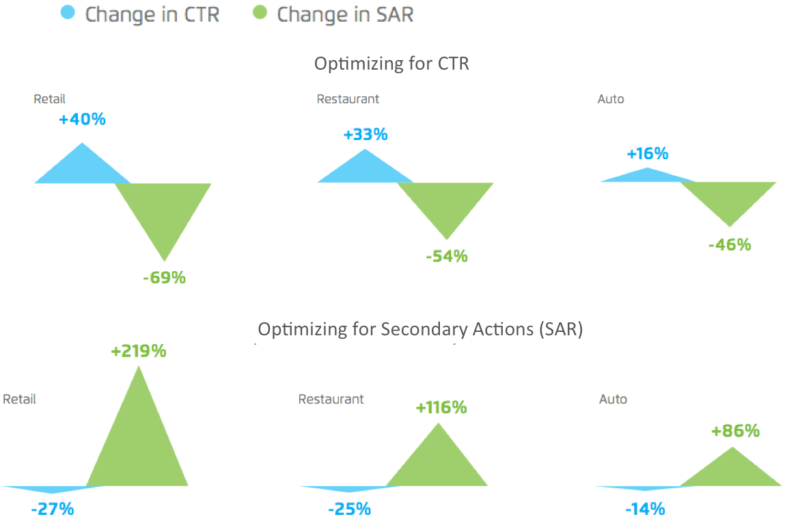Mobile Study Suggests Geofencing Drives Awareness More Than Direct Response
Mobile advertising platform xAd released data from two studies in the UK with grocery chain ASDA and Starbucks. The data are interesting on a variety of levels. Among other things they suggest, counterintuitively, that geofencing may be a better branding tool than audience targeting and the latter may be a better direct response tactic. The company, which […]

Mobile advertising platform xAd released data from two studies in the UK with grocery chain ASDA and Starbucks. The data are interesting on a variety of levels. Among other things they suggest, counterintuitively, that geofencing may be a better branding tool than audience targeting and the latter may be a better direct response tactic.
The company, which now calls itself a “location marketplace,” used a panel of 45,000 opt-in UK smartphone owners to determine the effectiveness of the two mobile campaigns. In both there was a control and an exposed group. As suggested, there were two targeting methodologies: audience targeting and geofencing or proximity targeting.
In the Starbucks case, audiences were identified by prior visits to coffee houses and cafes. (All of this was opt-in.) Then, a sub-group of those individuals was exposed to the mobile ads.

The study measured click-throughs but more importantly store visitations as a result of mobile ad exposures. There was also a follow-up survey of the members in the exposed groups to determine brand awareness and subsequent purchase behavior.
What xAd and its retail partners reported was an “an average of more than a 60 percent lift in store visits post campaign exposure.” They also said that the campaigns created greater brand awareness and increased in-store purchases as well.
Some reading this may feel these data are self-serving. They are; however I’ve seen enough mobile advertising data from multiple companies to accept the results as accurate.
What was most interesting to me about my discussion with xAd was the following findings (I’m oversimplifying):
- Geofenced ads performed better from a CTR standpoint
- Audience targeting drove more in-store visits
These targeting methodologies can be combined but in this case they were separate.
Previously xAd released results of a benchmarking study based on 80 mobile ad campaigns that found clicks and store visits were inversely correlated. In fact, optimizing for CTR had an adverse impact on secondary actions such as calls and store visits. Conversely, optimizing for secondary actions tended to depress CTR.

Back to the Starbucks campaign findings. Users exposed to the proximity/geofenced ads clicked-through more often than audience targeted group members. But audience targeting resulted a higher store visitation lift rate.
Extrapolating a bit — again the results are more complicated than what I’m about to say — it may turn out that proximity based targeting is a more effective brand awareness tactic than audience targeting. Audience targeting may turn out to be a better “direct response” tactic in turn.
This is the opposite of how one would generally and logically think about these tactics. Traditionally one would use geofencing to drive nearby store visits and audience targeting to create brand awareness. In many cases geofencing does drive immediate visits and audience targeting can also create brand awareness. So it’s not a simple matter.
I’ve seen other studies that suggest the same conclusion: proximity targeting builds awareness, which then later may result in a store visit or a purchase. I find the implications of the xAd data fascinating and certainly worth additional investigation. Mobile and location-based advertising best practices are just starting to emerge.
Ideally, as mentioned, both audience targeting and geofencing would be combined for maximum lift and impact. A recent Toyota mobile campaign used both simultaneously and effectively.
One consistent takeaway from this xAd data and other similar studies is that the click is an inadequate metric to measure mobile ad effectiveness. At a minimum other metrics such as engagement, calls and store visits/offline attribution should be used to evaluate campaigns.
Contributing authors are invited to create content for MarTech and are chosen for their expertise and contribution to the search community. Our contributors work under the oversight of the editorial staff and contributions are checked for quality and relevance to our readers. MarTech is owned by Semrush. Contributor was not asked to make any direct or indirect mentions of Semrush. The opinions they express are their own.
Related stories
New on MarTech